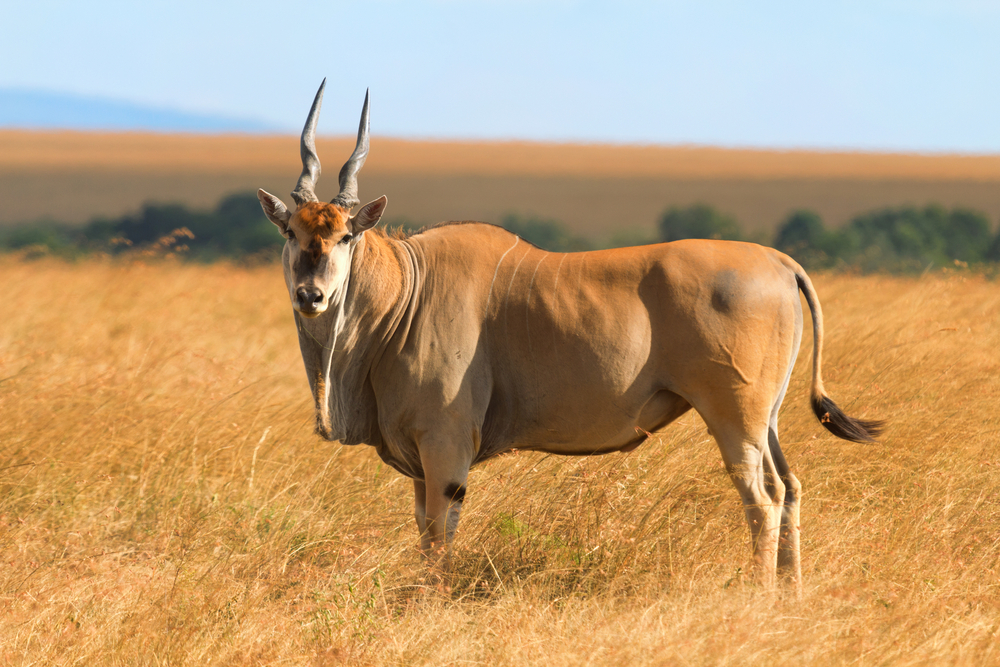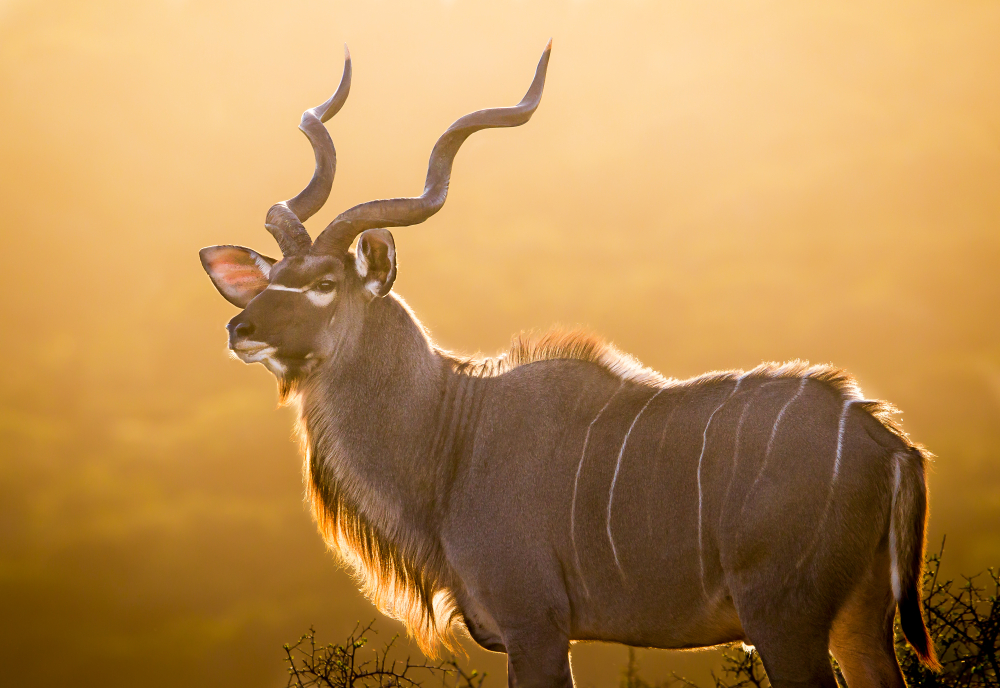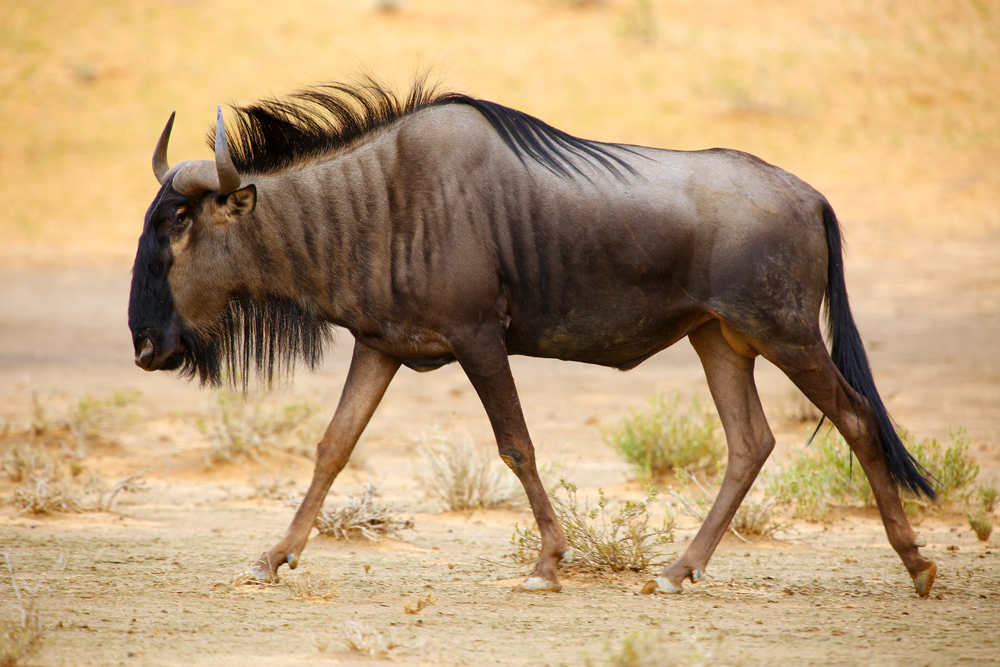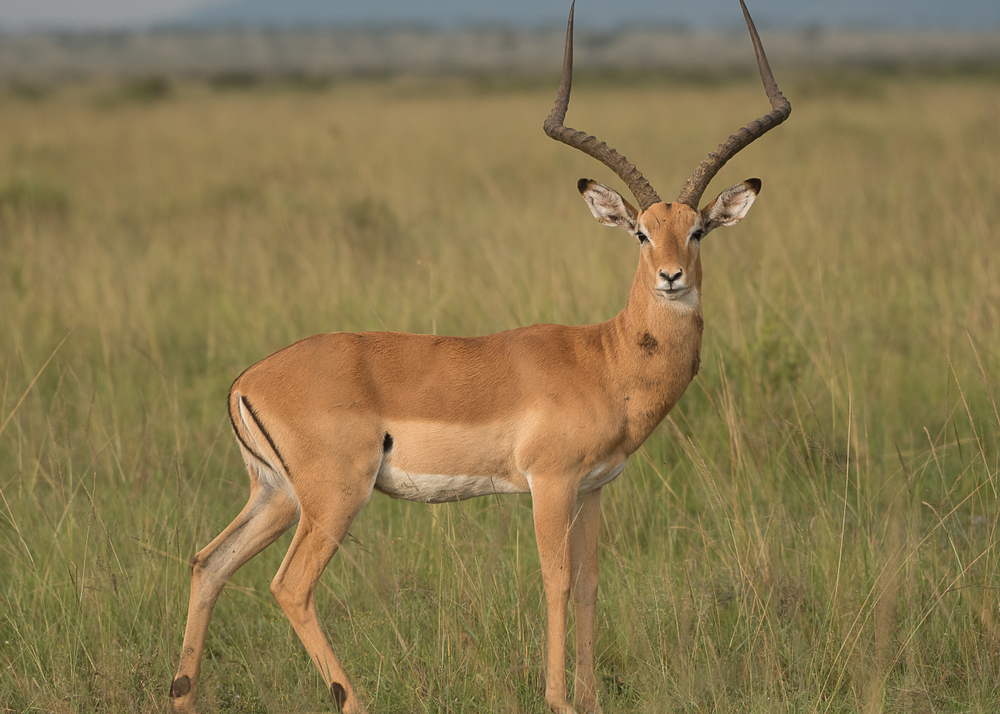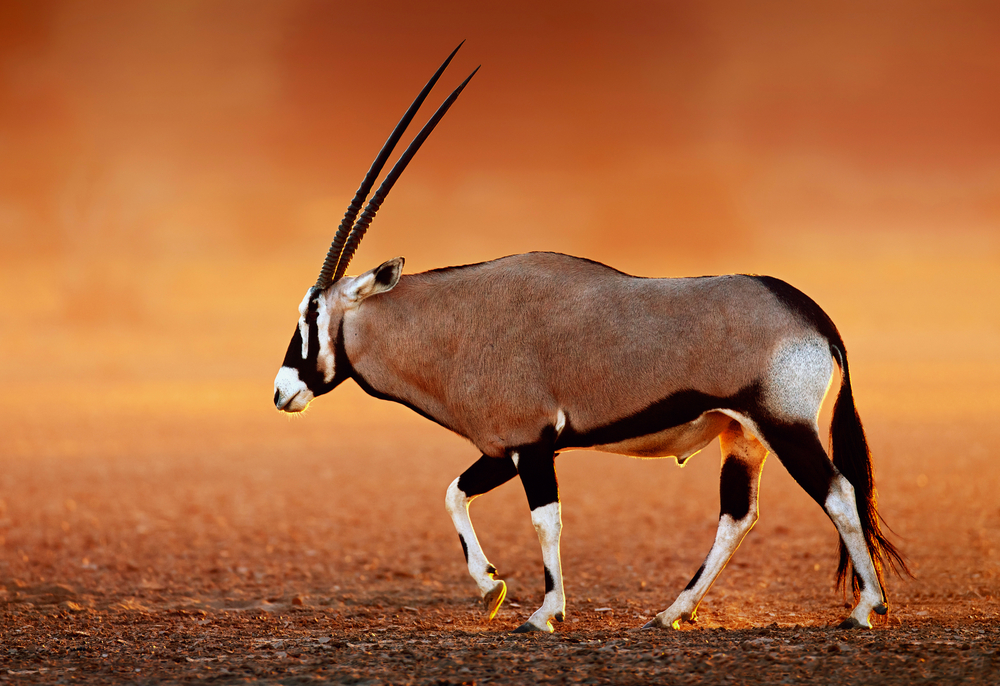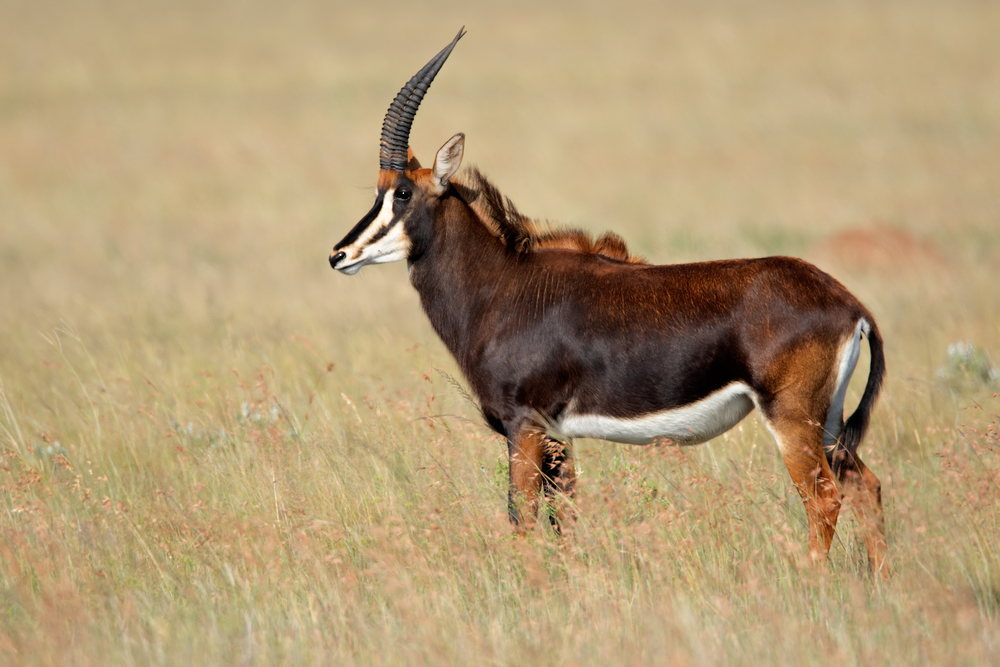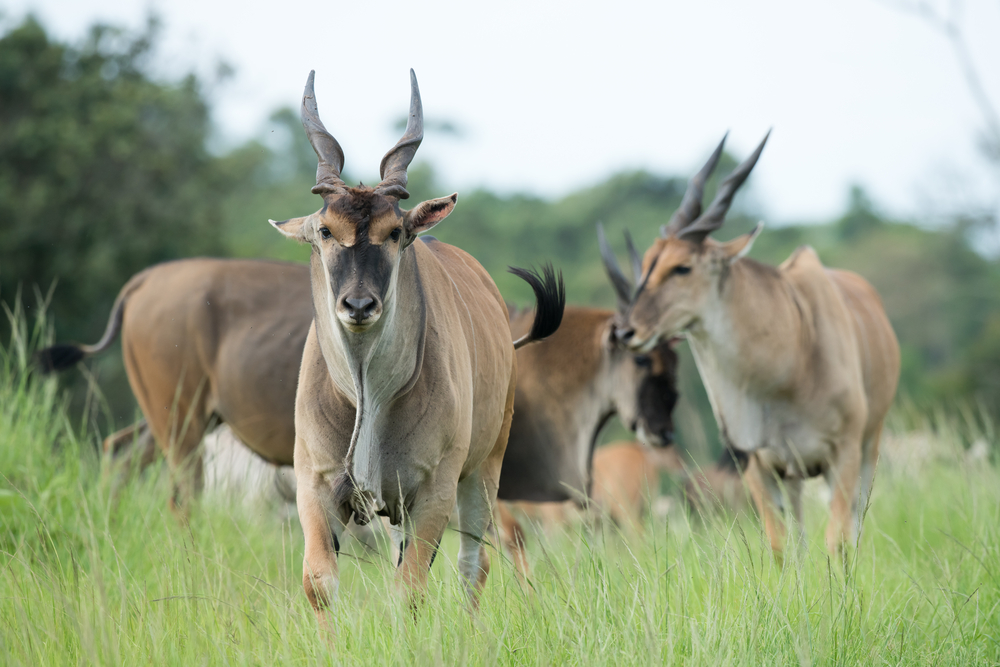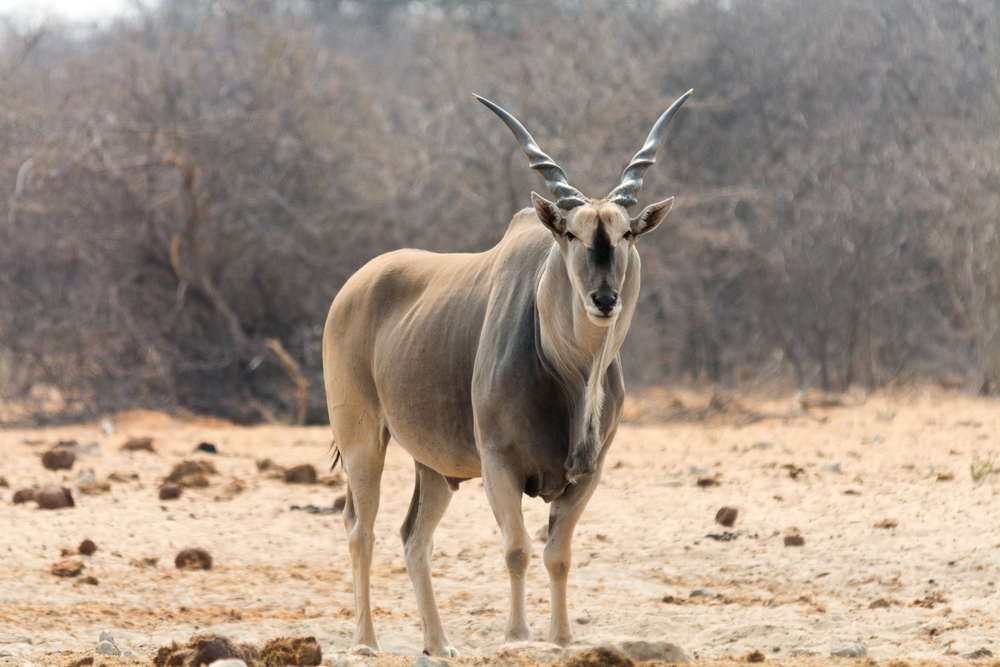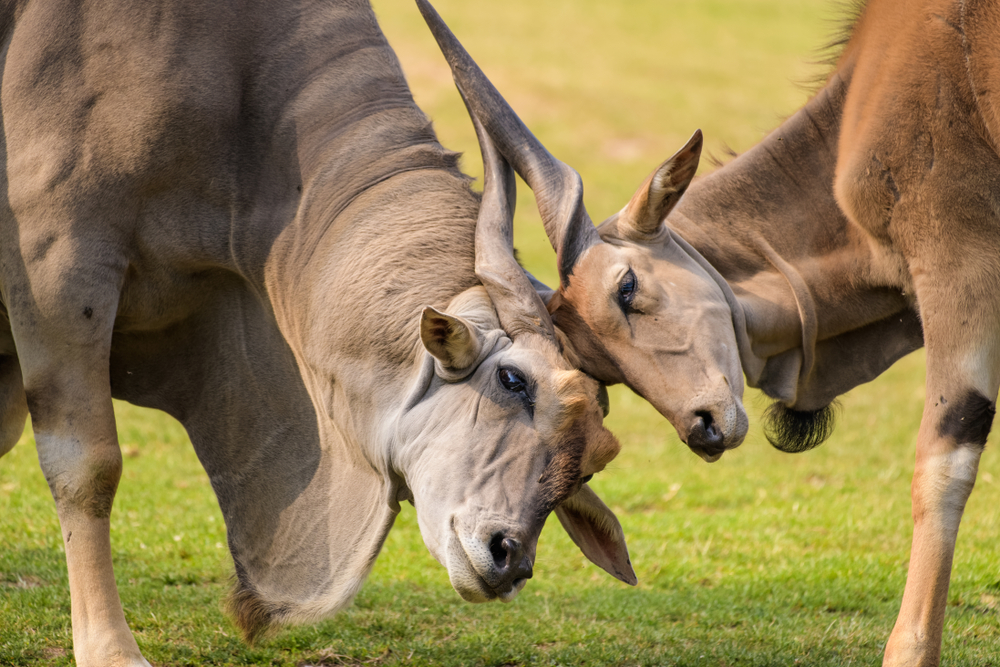Elands are distinct among antelopes, possessing unique characteristics and traits that set them apart from other species in the antelope family. Here’s how elands compare to other antelopes:
- Size: Elands are the largest antelope species in Africa, with males weighing between 1,000 to 2,200 pounds (450 to 1,000 kg) or more. Their imposing size makes them significantly larger than most other antelope species.
- Horns: Both male and female elands have long, spiral-shaped horns. While some other antelope species also have horns, the size and shape of eland horns are particularly distinctive.
- Dewlaps: Elands have prominent dewlaps (pendulous throat skin) that hang from their throats. While other antelopes may have neck or throat markings, elands’ dewlaps are unique and especially noticeable in males.
- Behavior: Elands exhibit relatively calm and docile behavior, making them less prone to sudden flight or aggressive behavior compared to some other antelope species that are more skittish.
- Social Structure: Elands can be solitary or form small groups, and their social structure is quite flexible. In contrast, some antelope species, such as impalas, are known for forming larger herds with complex social hierarchies.
- Feeding Habits: While elands are primarily grazers, they are also opportunistic feeders that can consume a variety of vegetation, including grasses, forbs, and shrubs. Other antelope species may have more specialized diets.
- Coat Color: Elands have a tan or fawn-colored coat with subtle vertical white stripes on their sides. This coloration differs from the coats of other antelope species, which may have different patterns or color variations.
- Vocalizations: Elands are known for their unique vocalizations, including deep barks and grunts. While vocalizations are common among antelopes, the specific sounds and communication patterns can vary between species.
- Cultural Significance: Elands hold cultural significance in various African societies and have been depicted in art, folklore, and rituals. Their symbolism and role in local traditions may differ from that of other antelopes.
- Conservation Status: The conservation status of eland species varies, with some populations considered vulnerable or near-threatened due to habitat loss and hunting pressure. Similarly, the conservation status of other antelope species can also vary widely.
Overall, elands’ combination of size, horns, dewlaps, and adaptable behavior make them a unique and iconic member of the antelope family, standing out among the diverse array of antelope species found across Africa.



































































